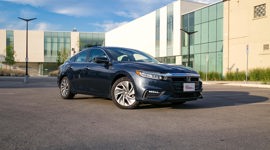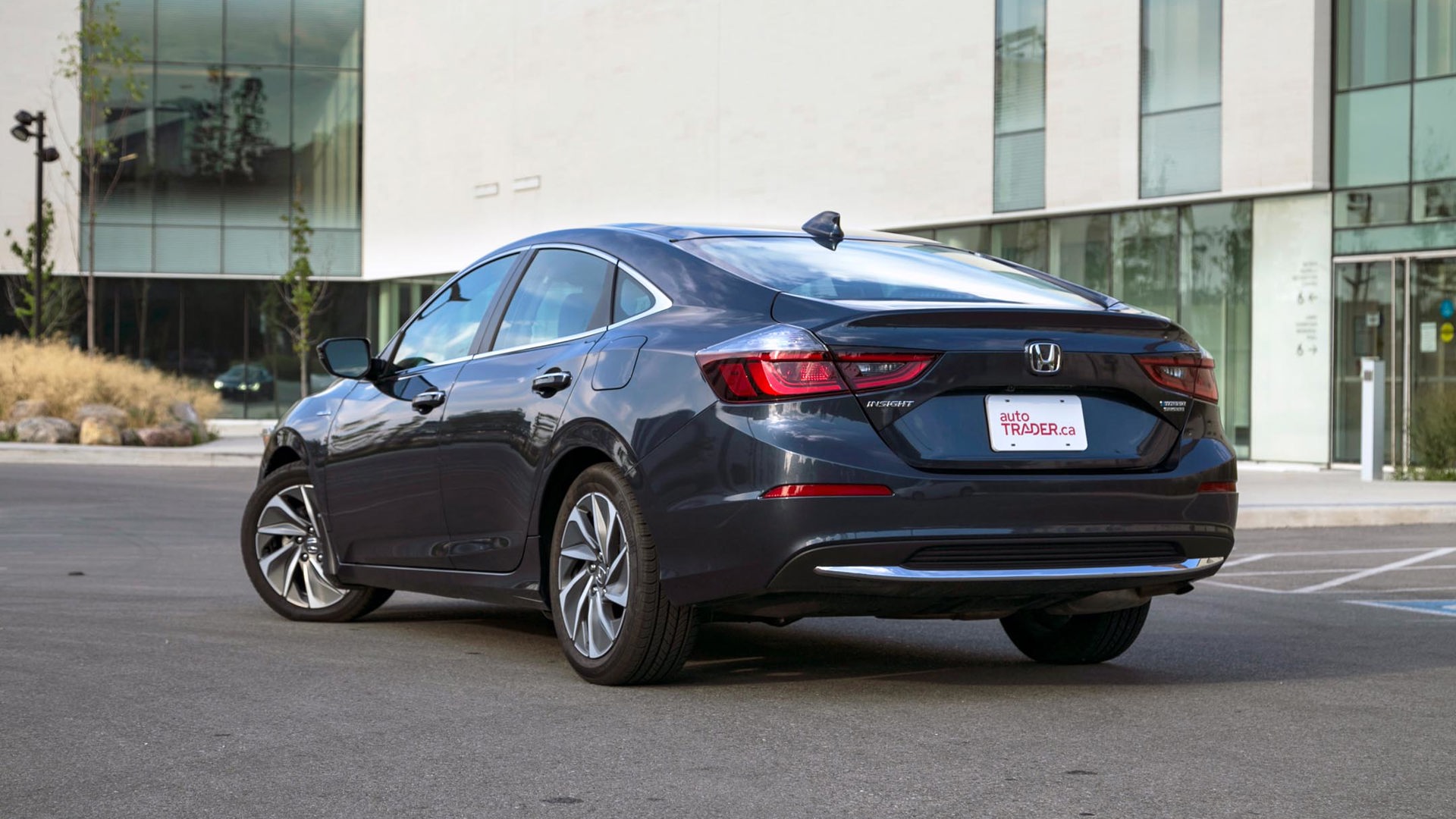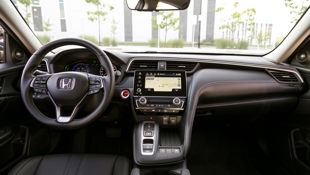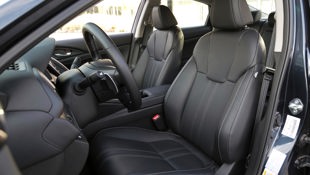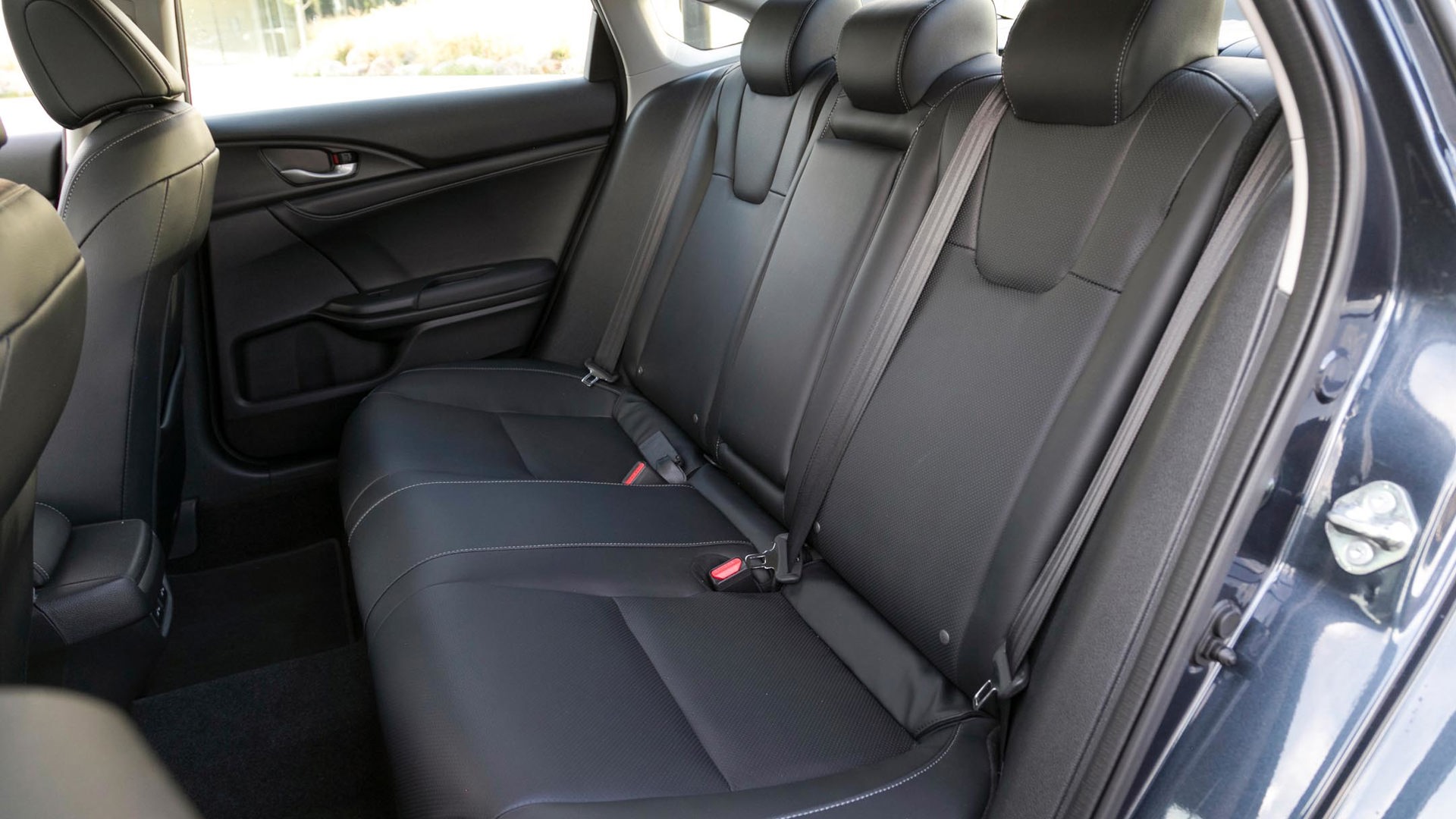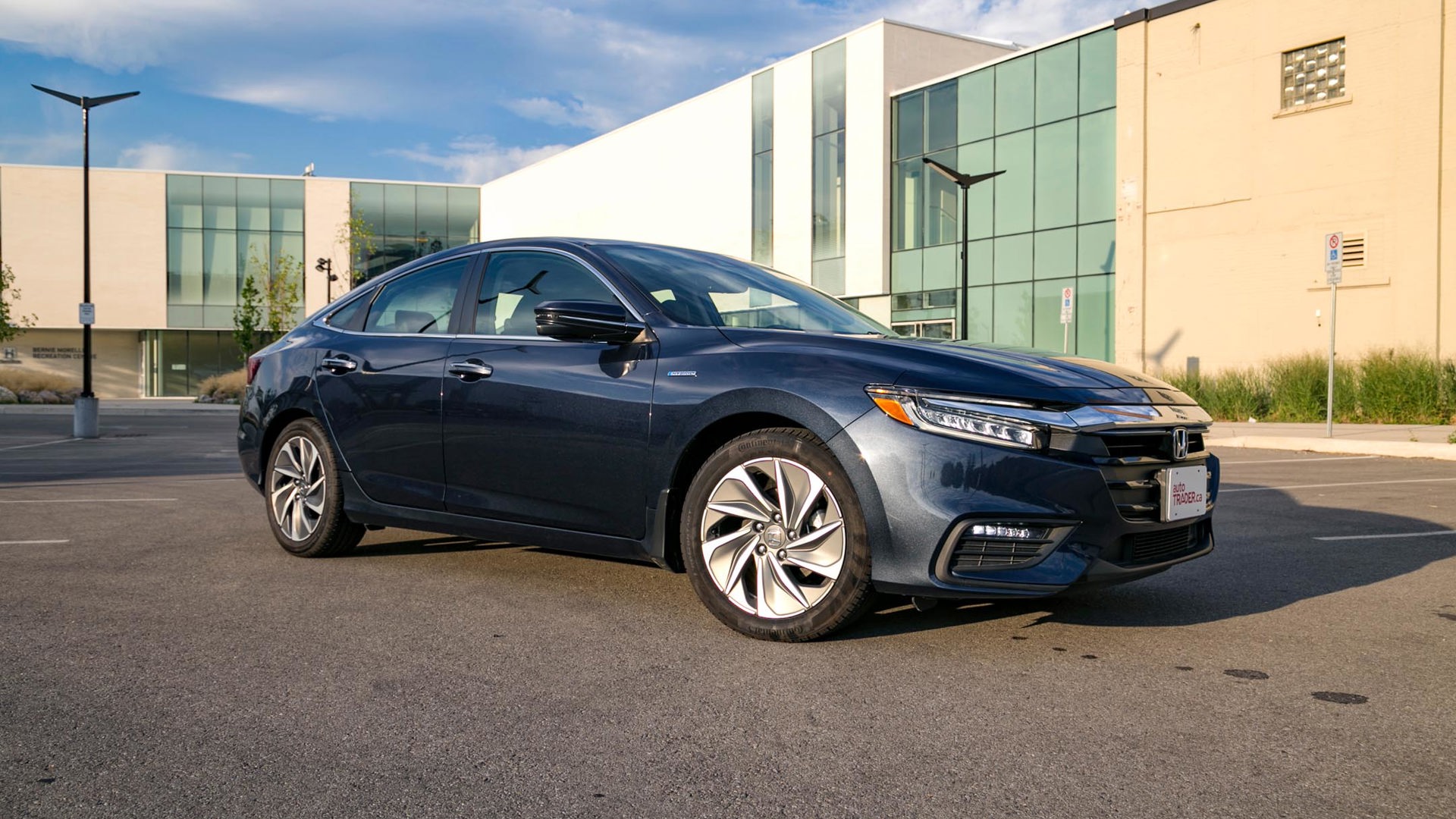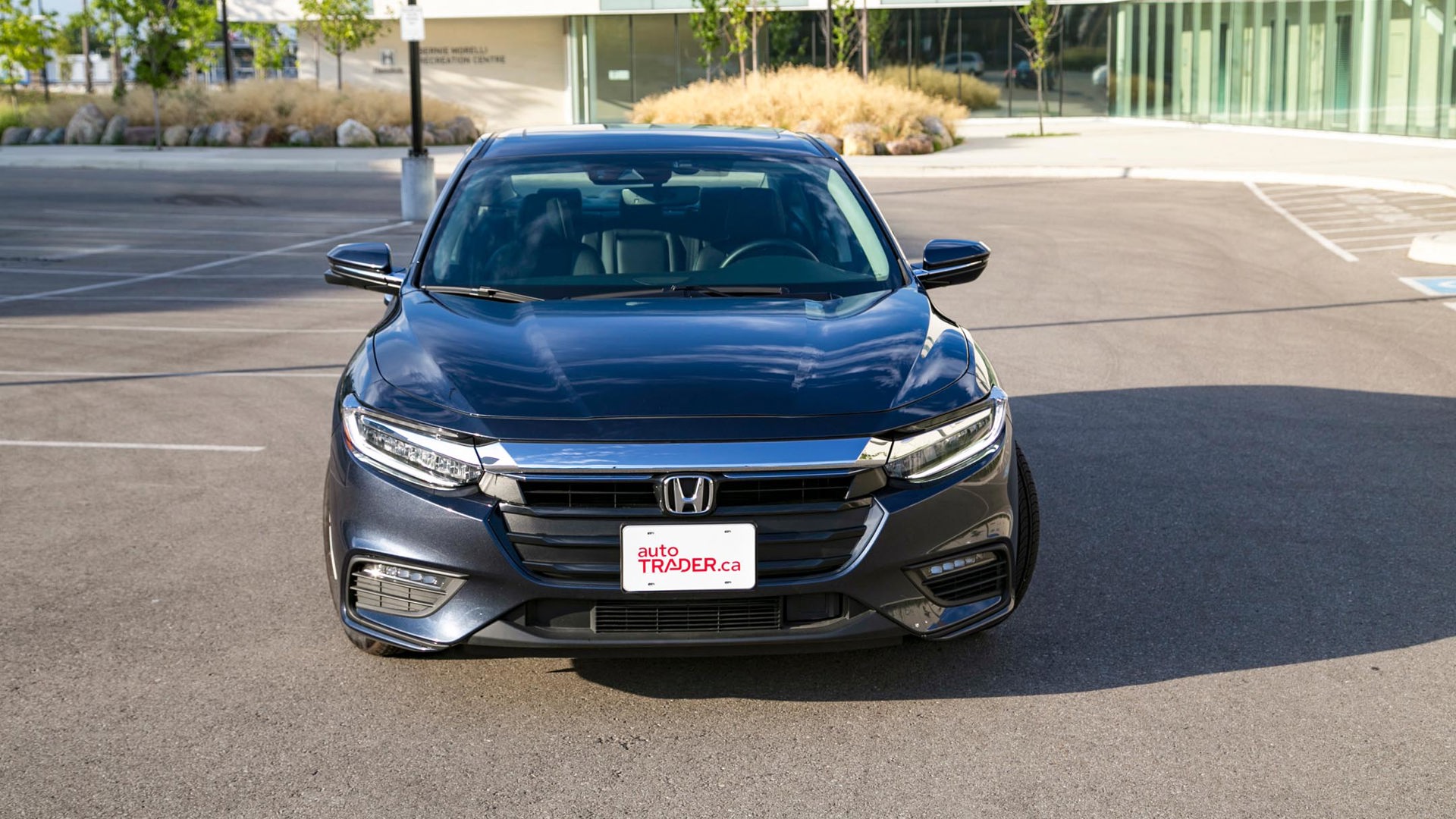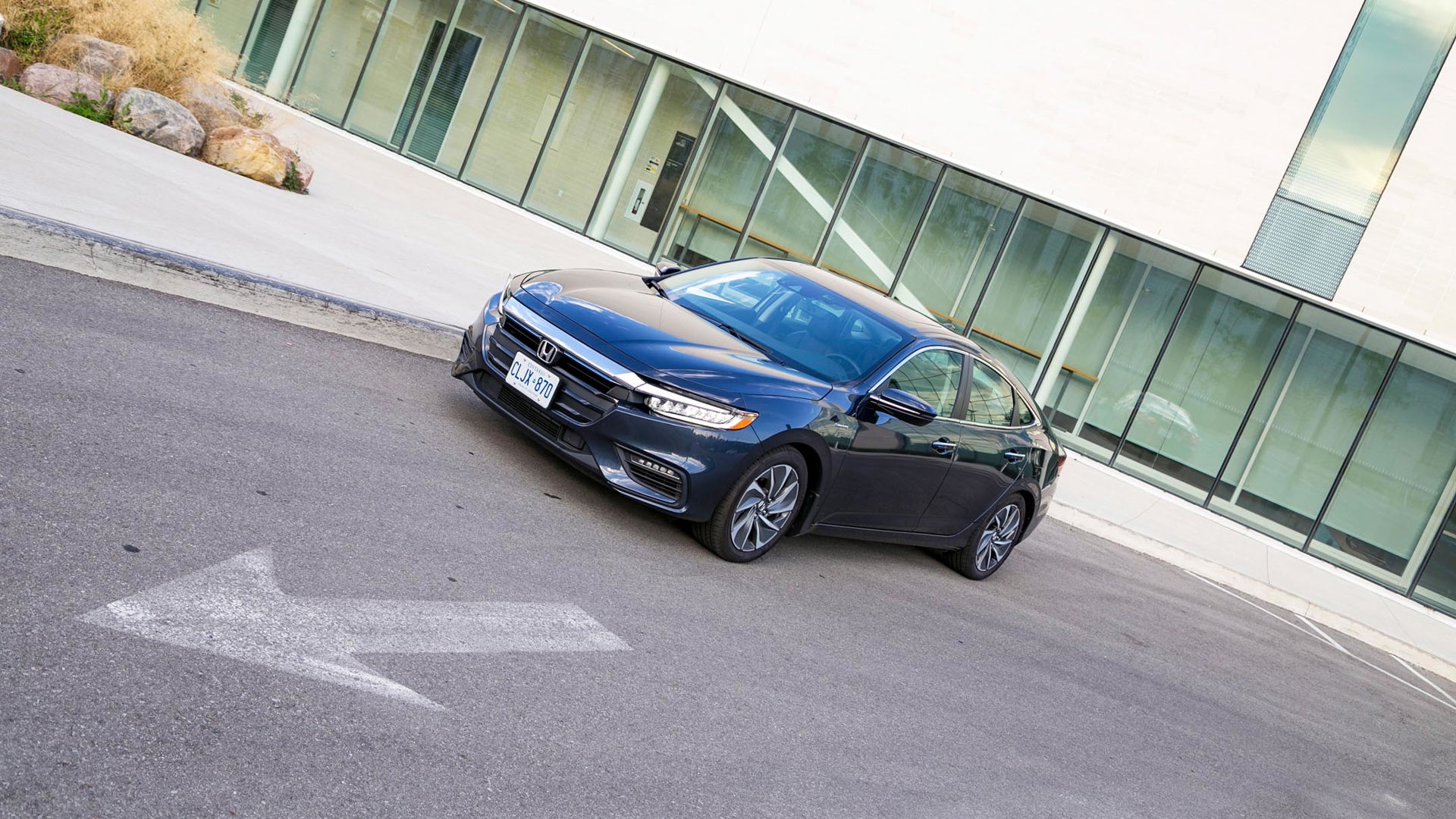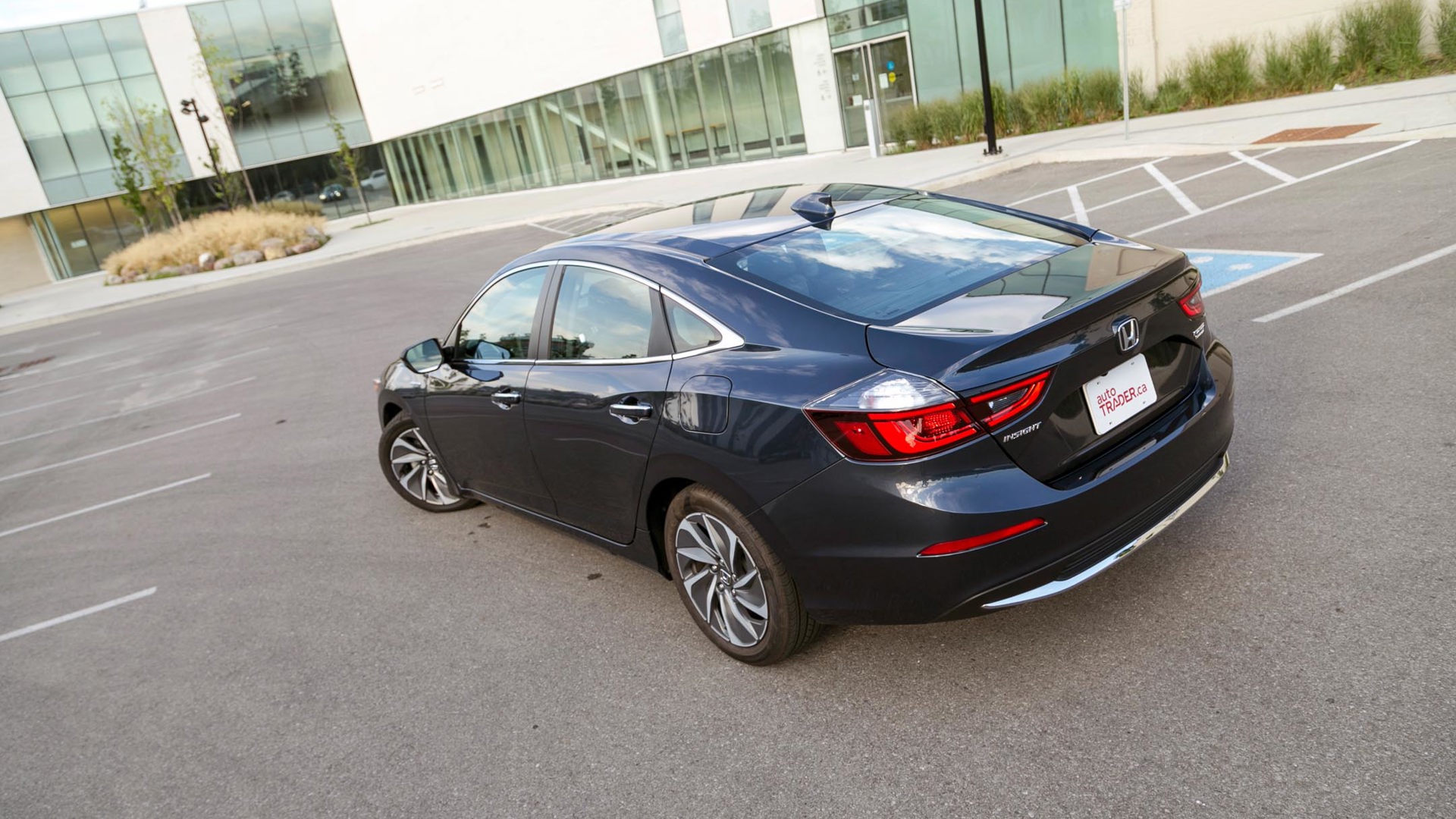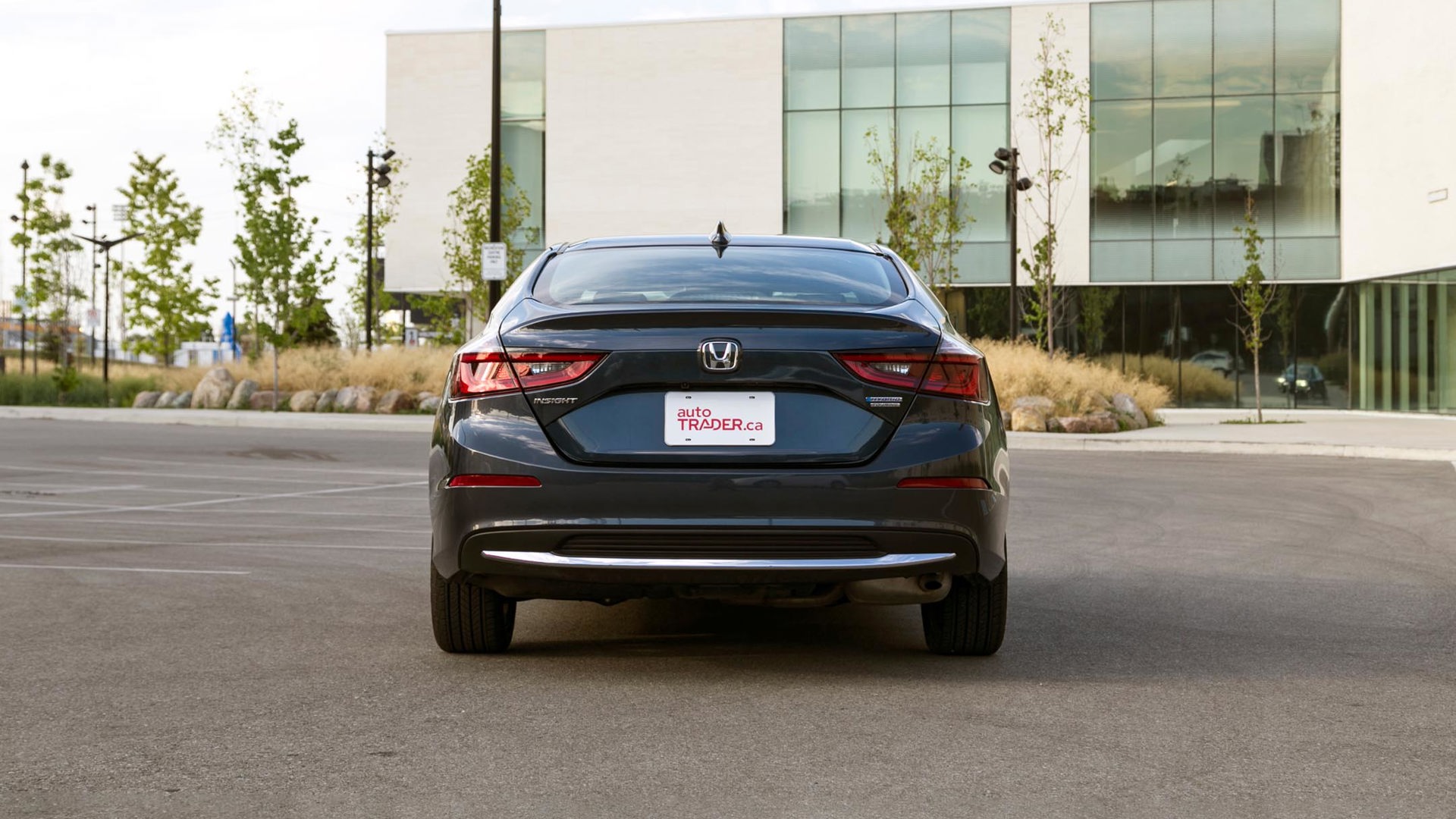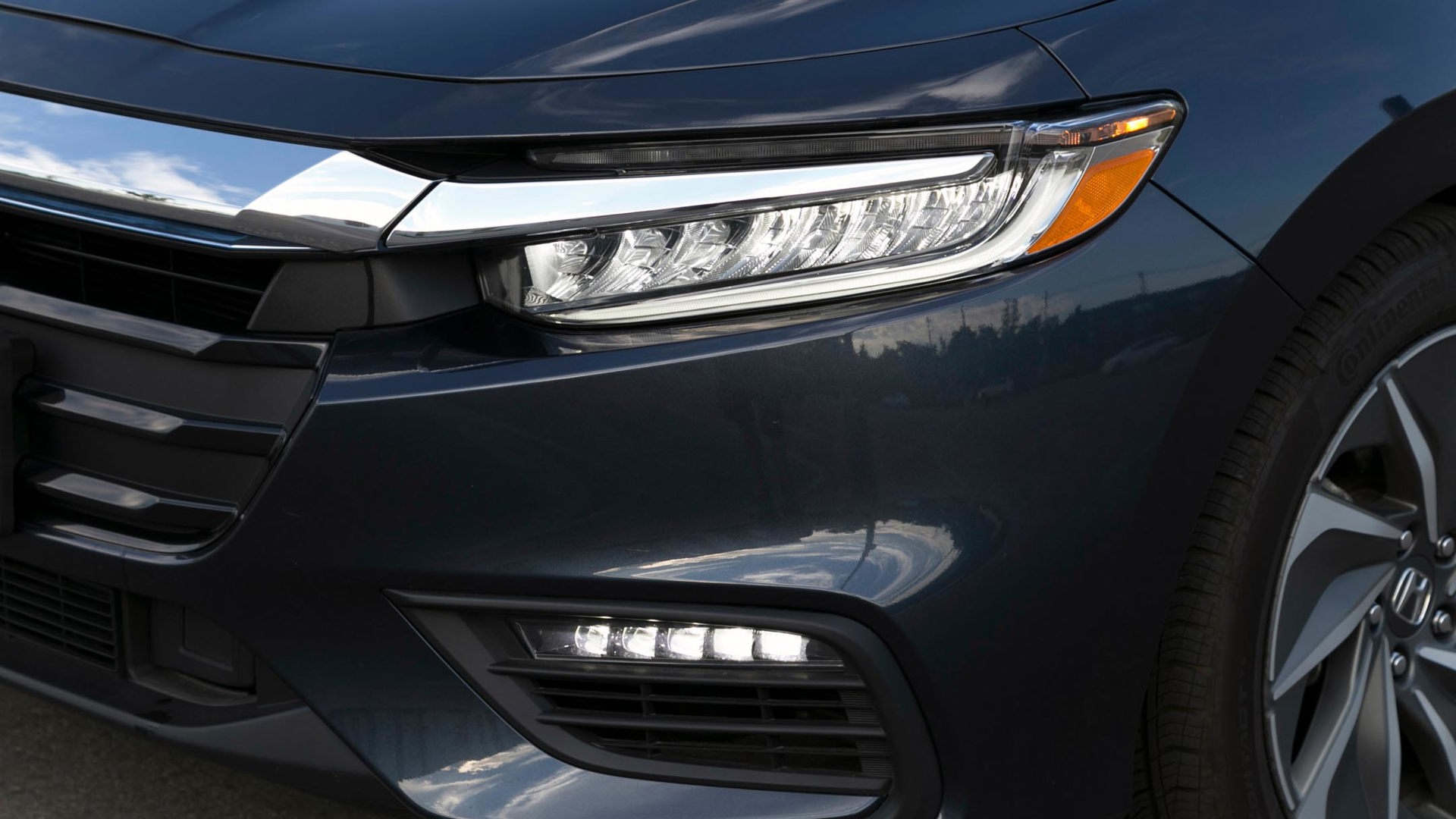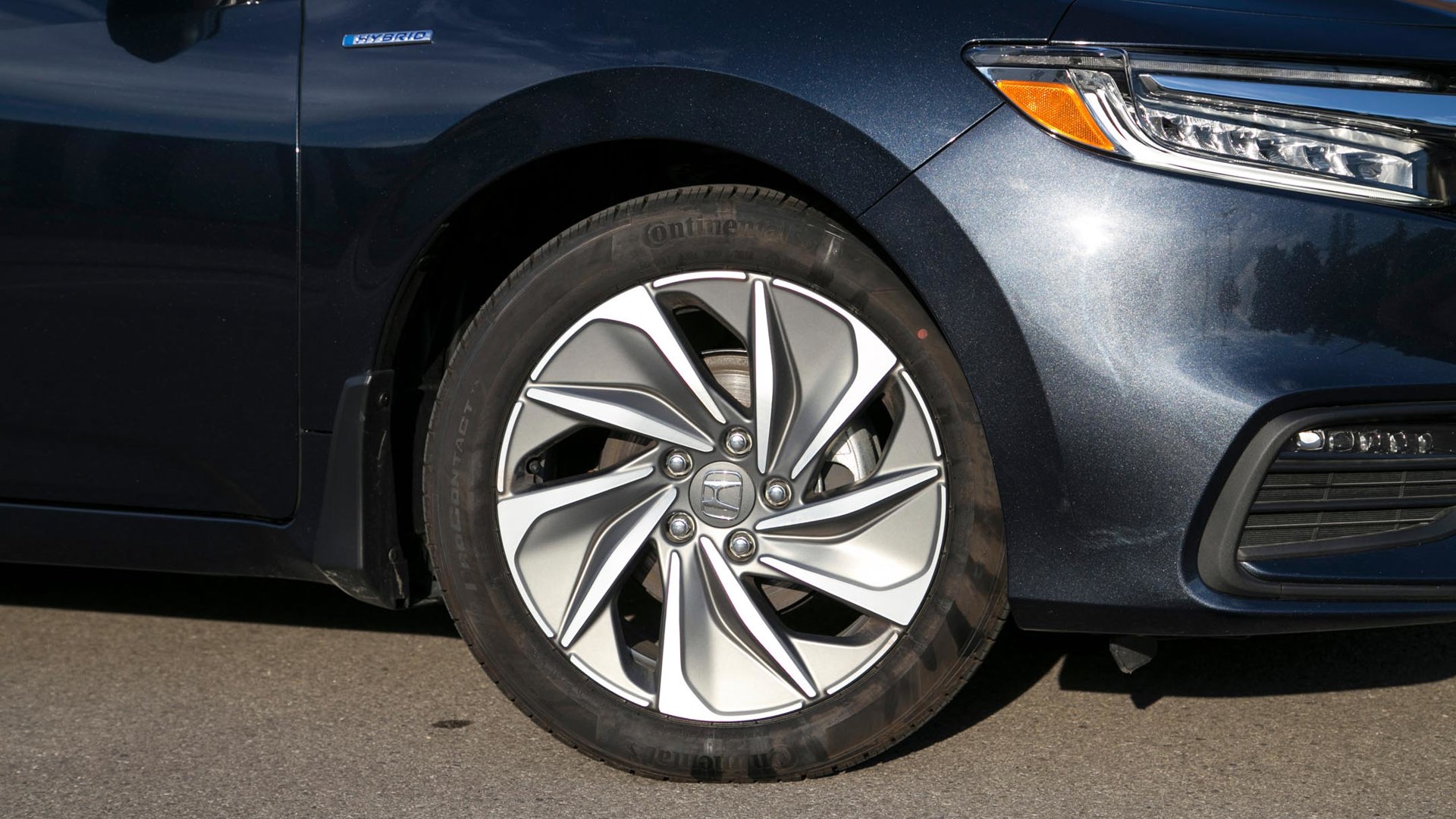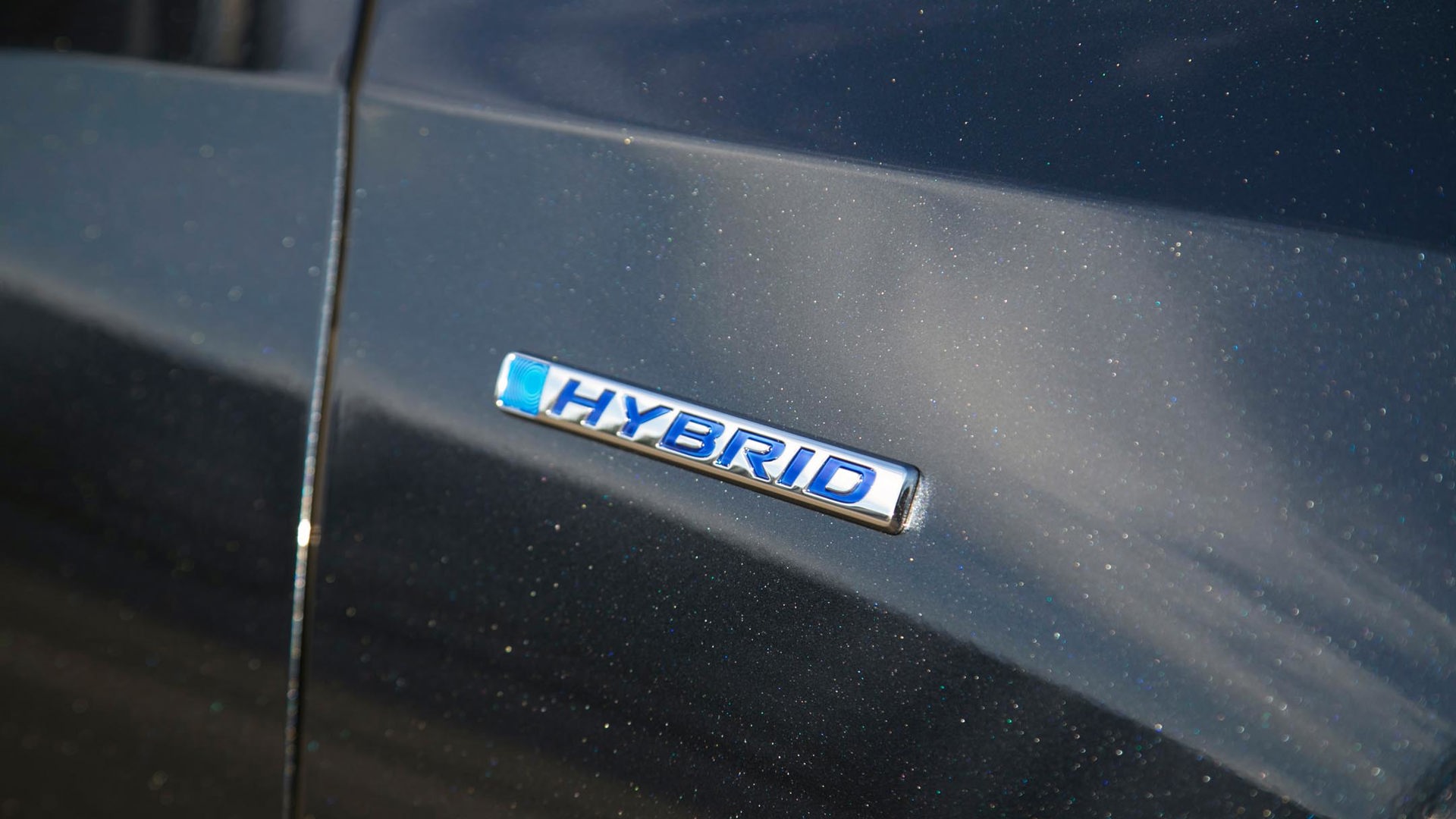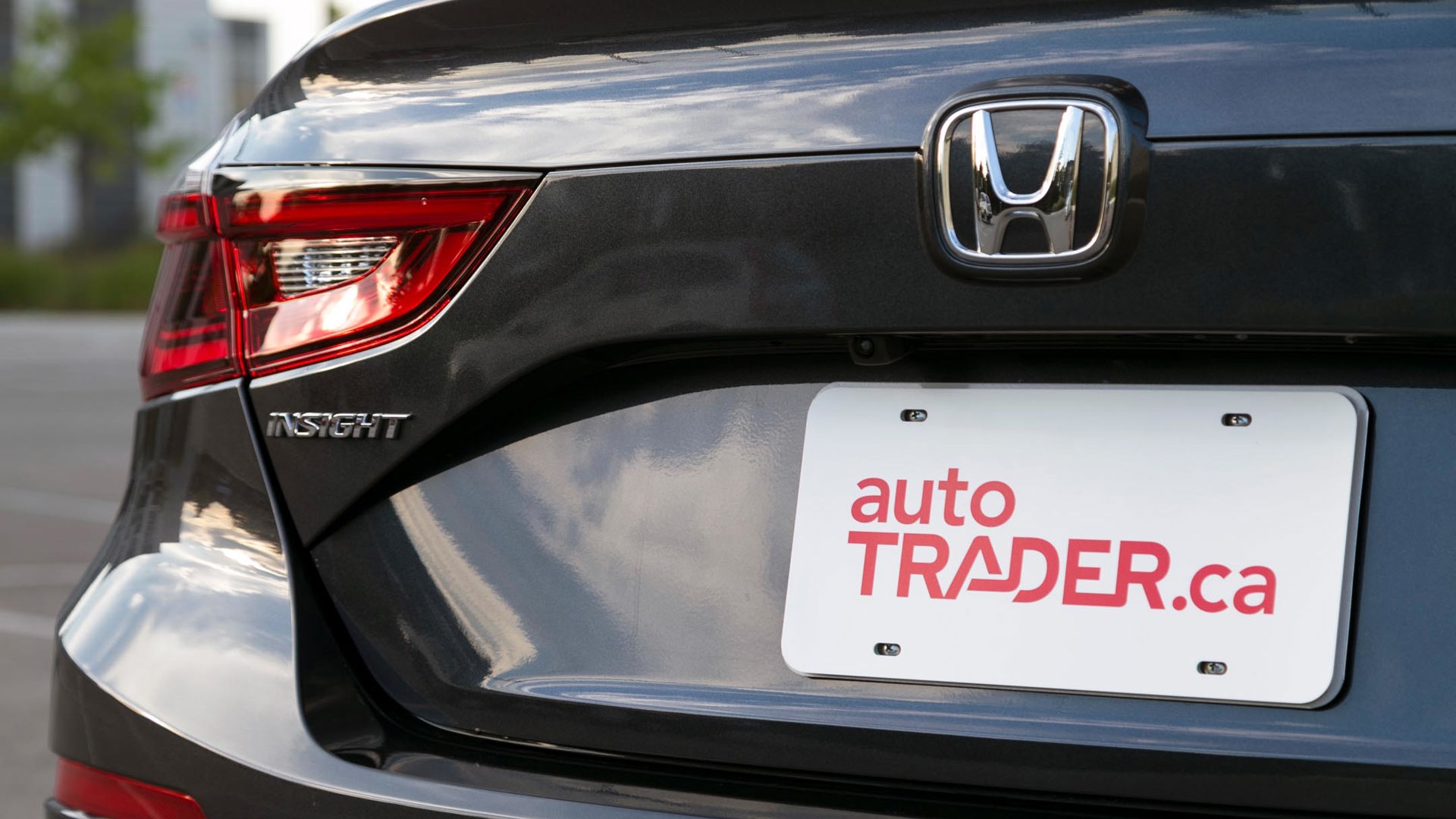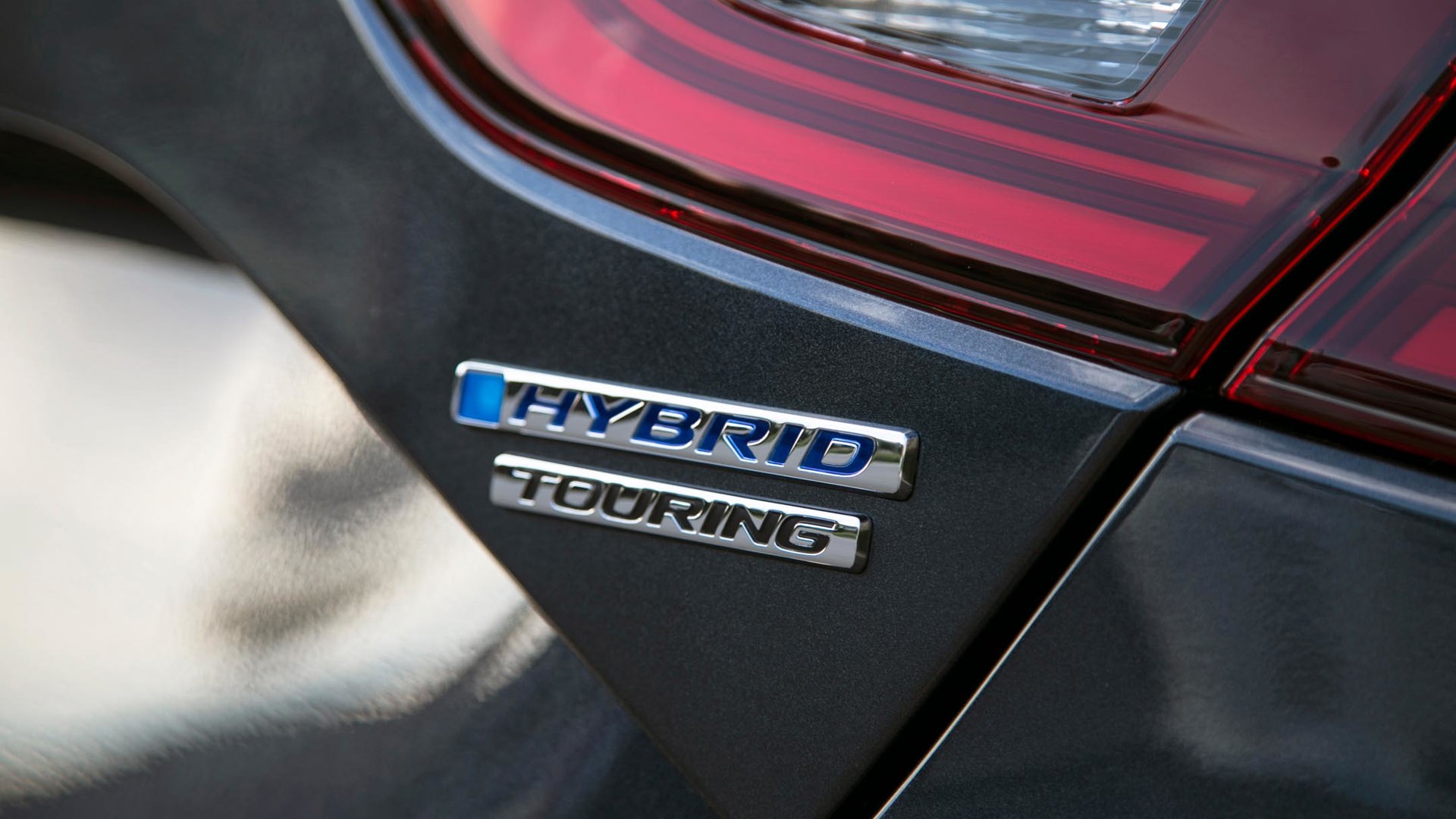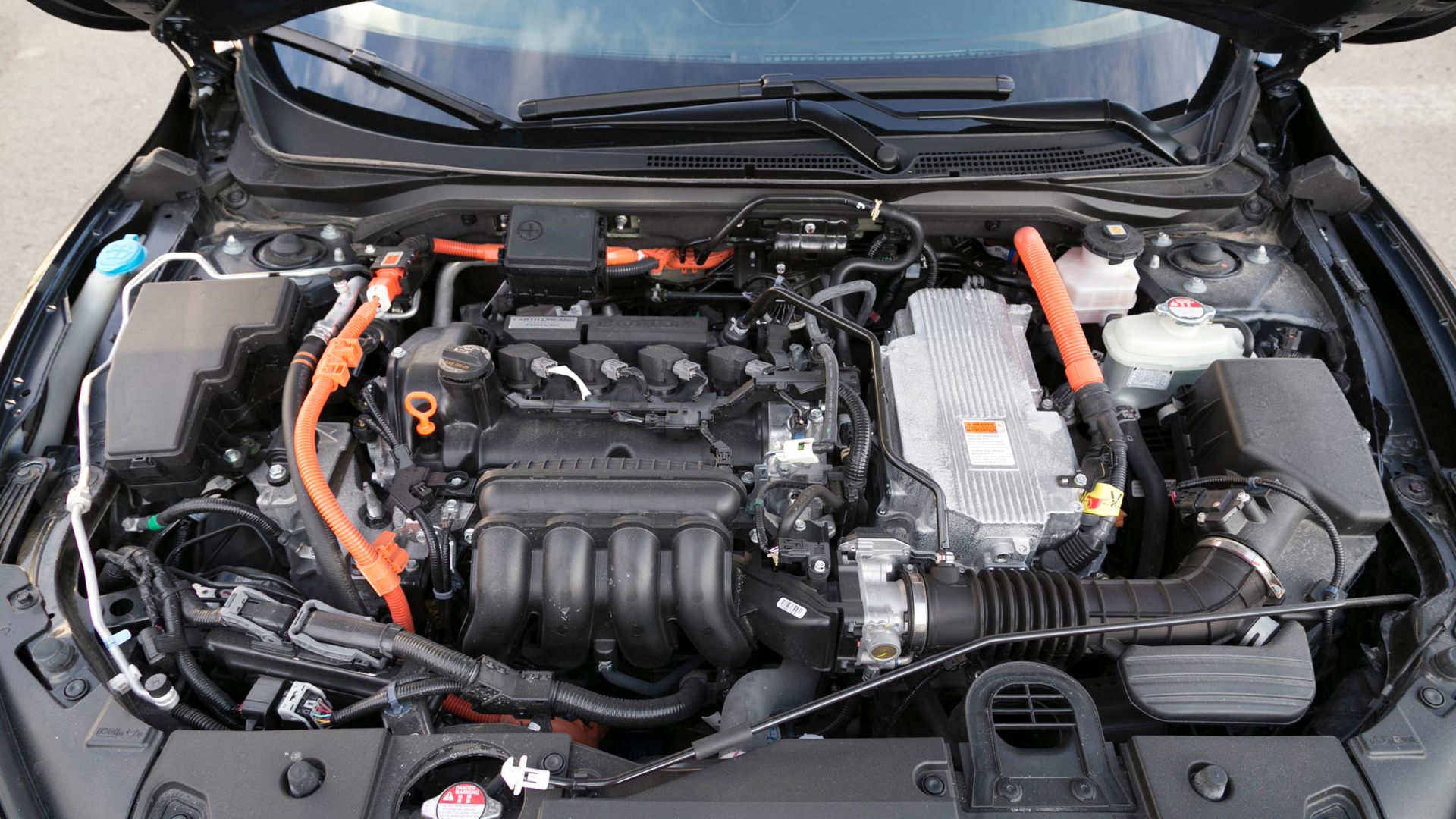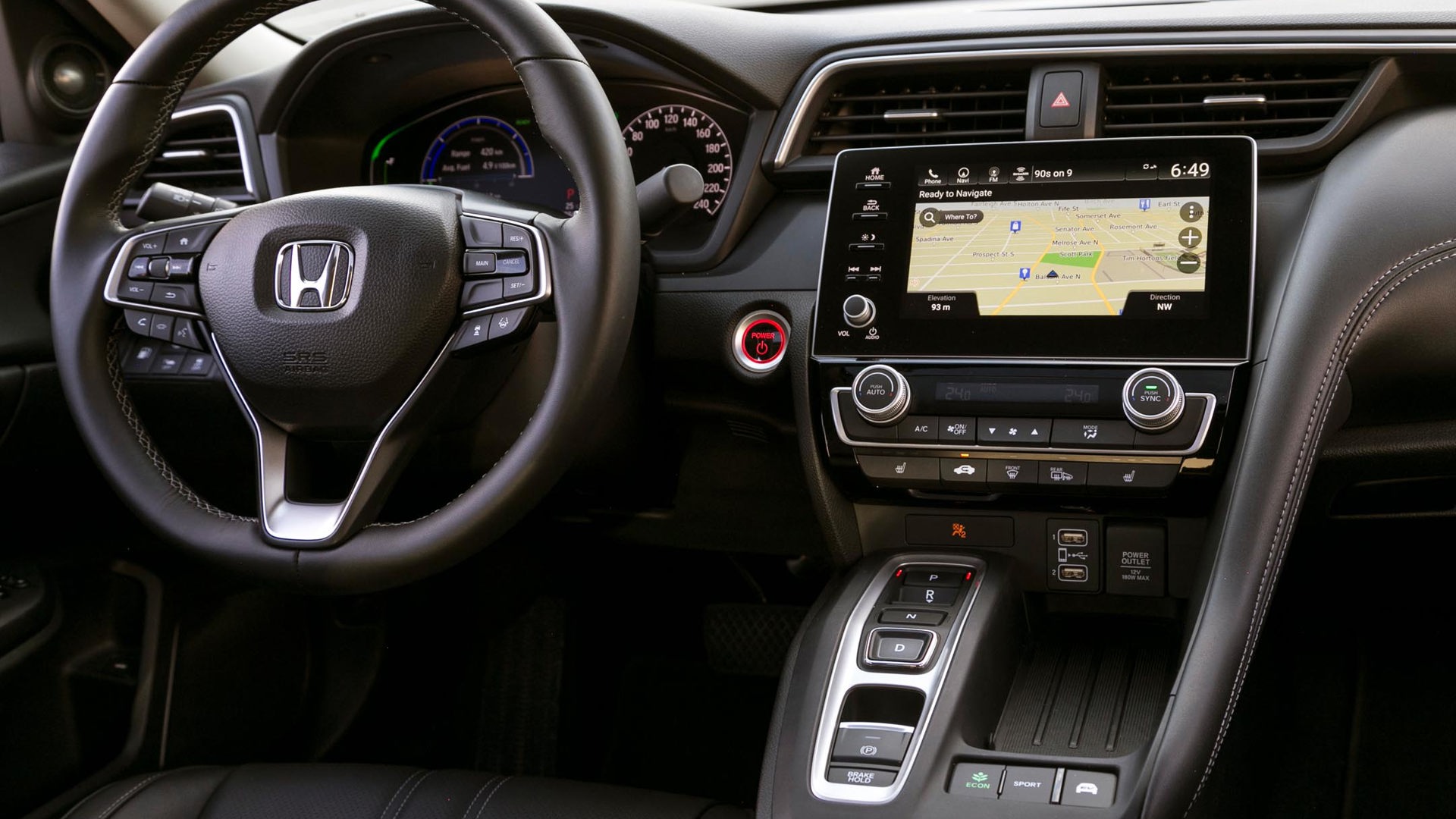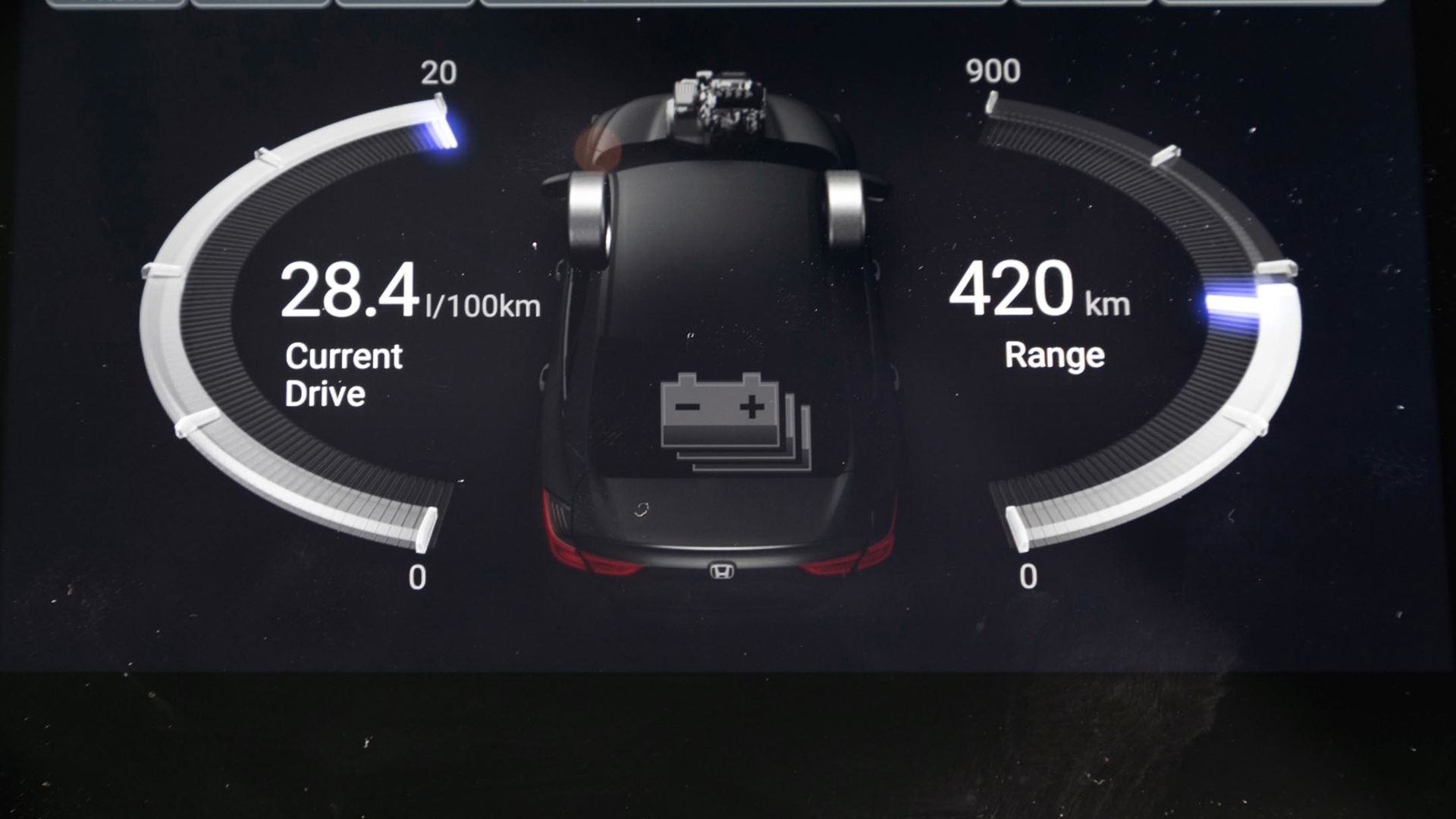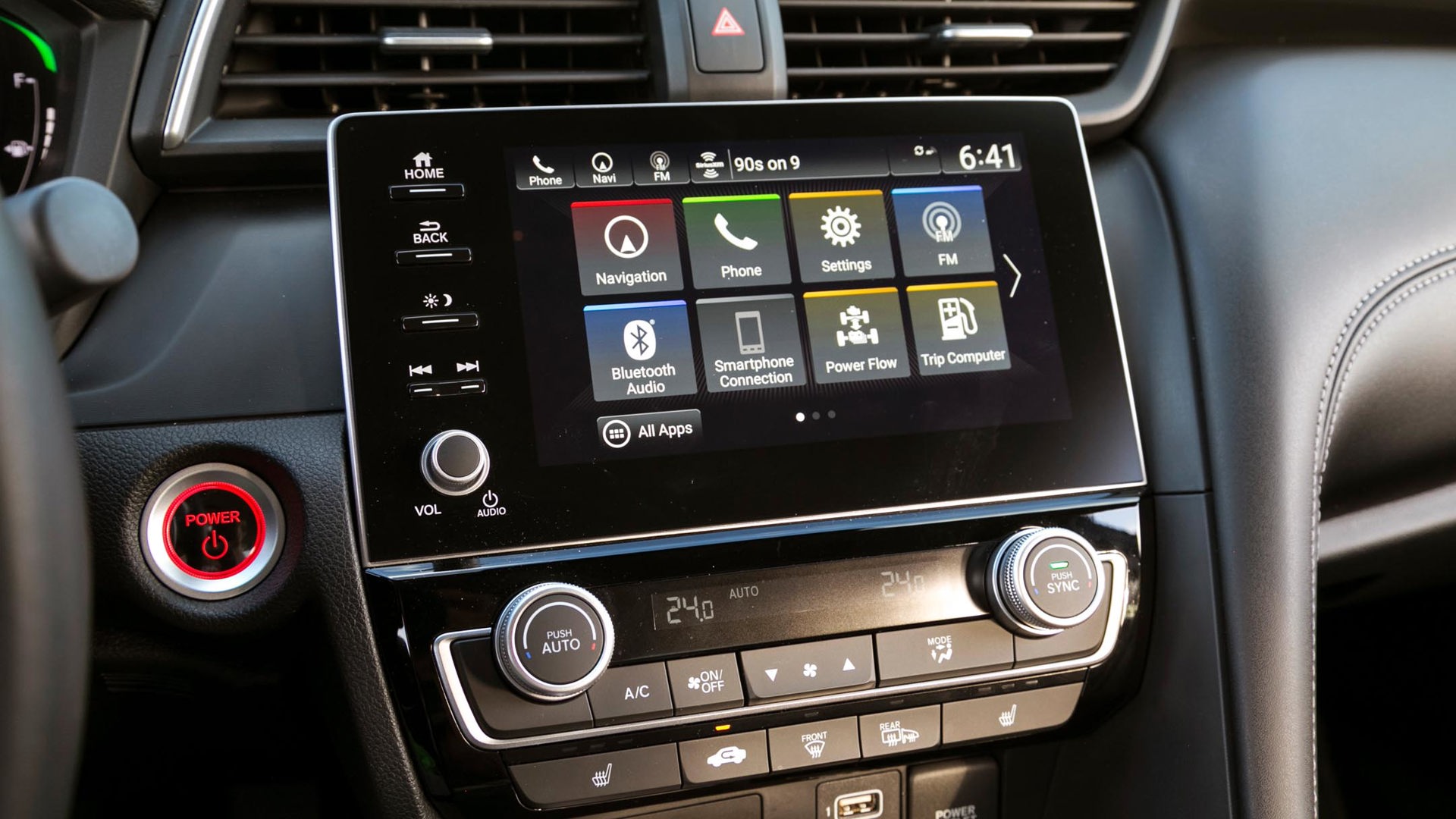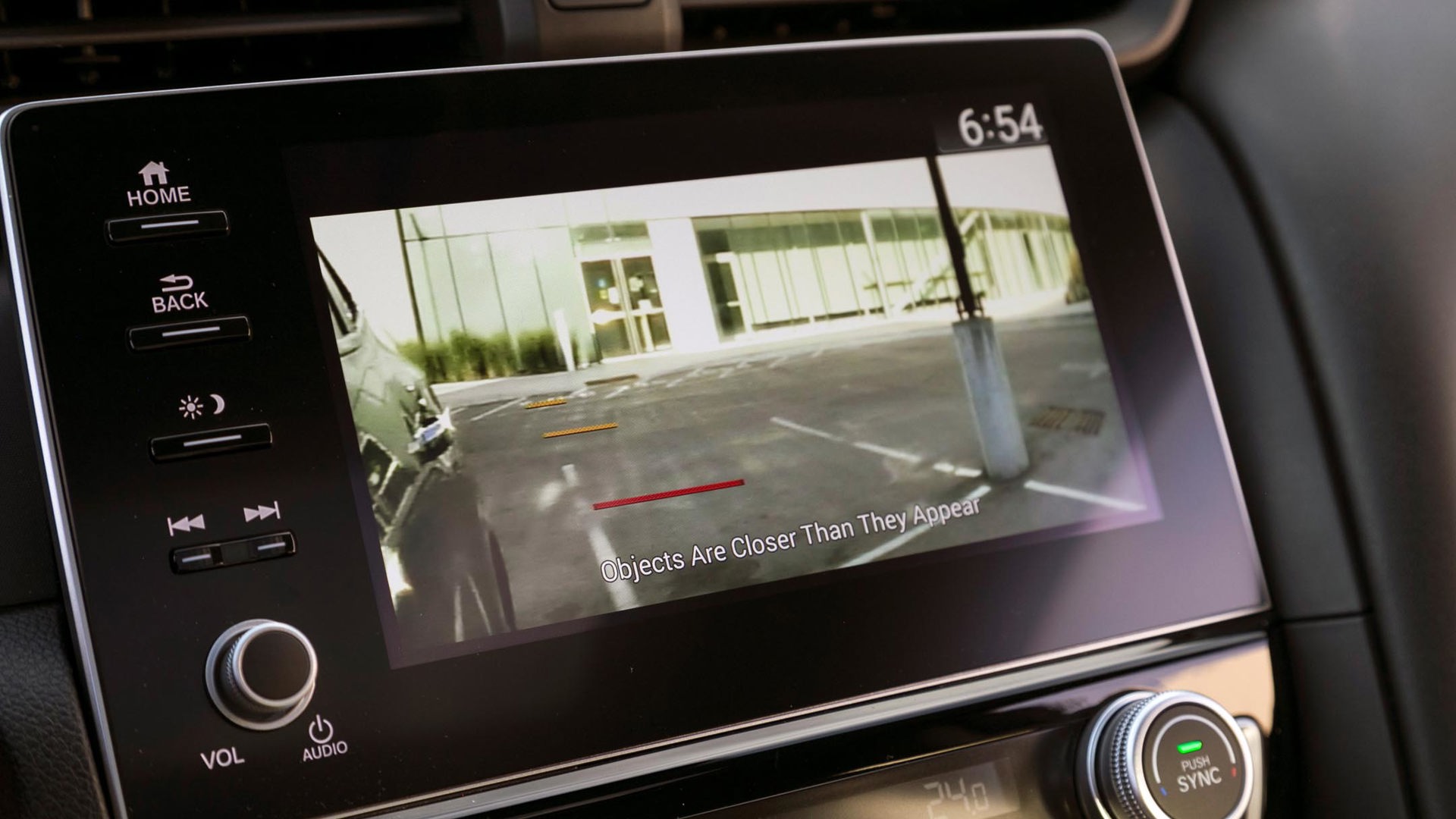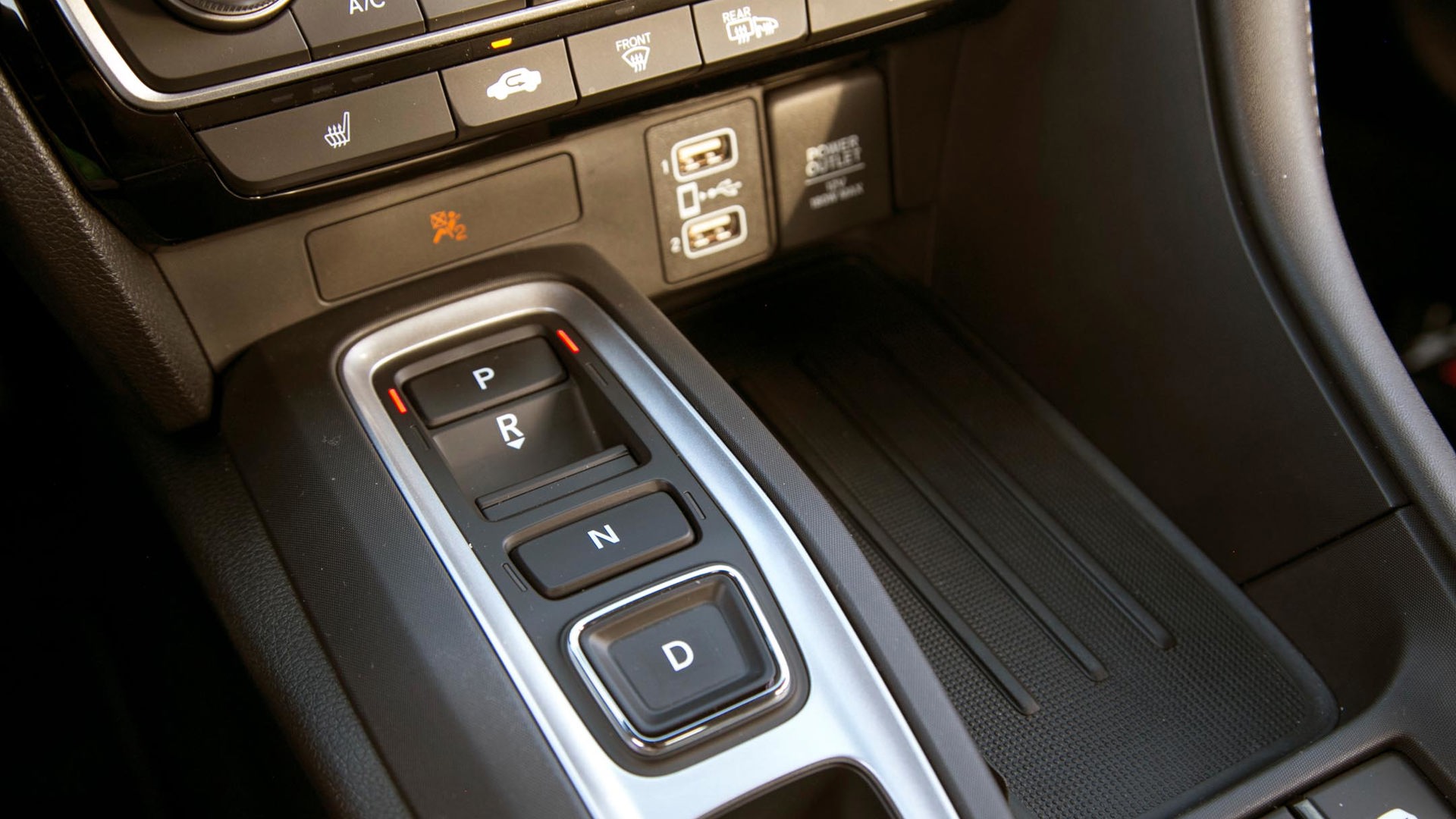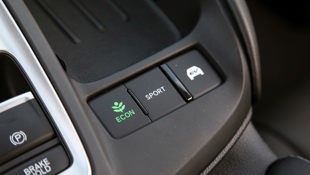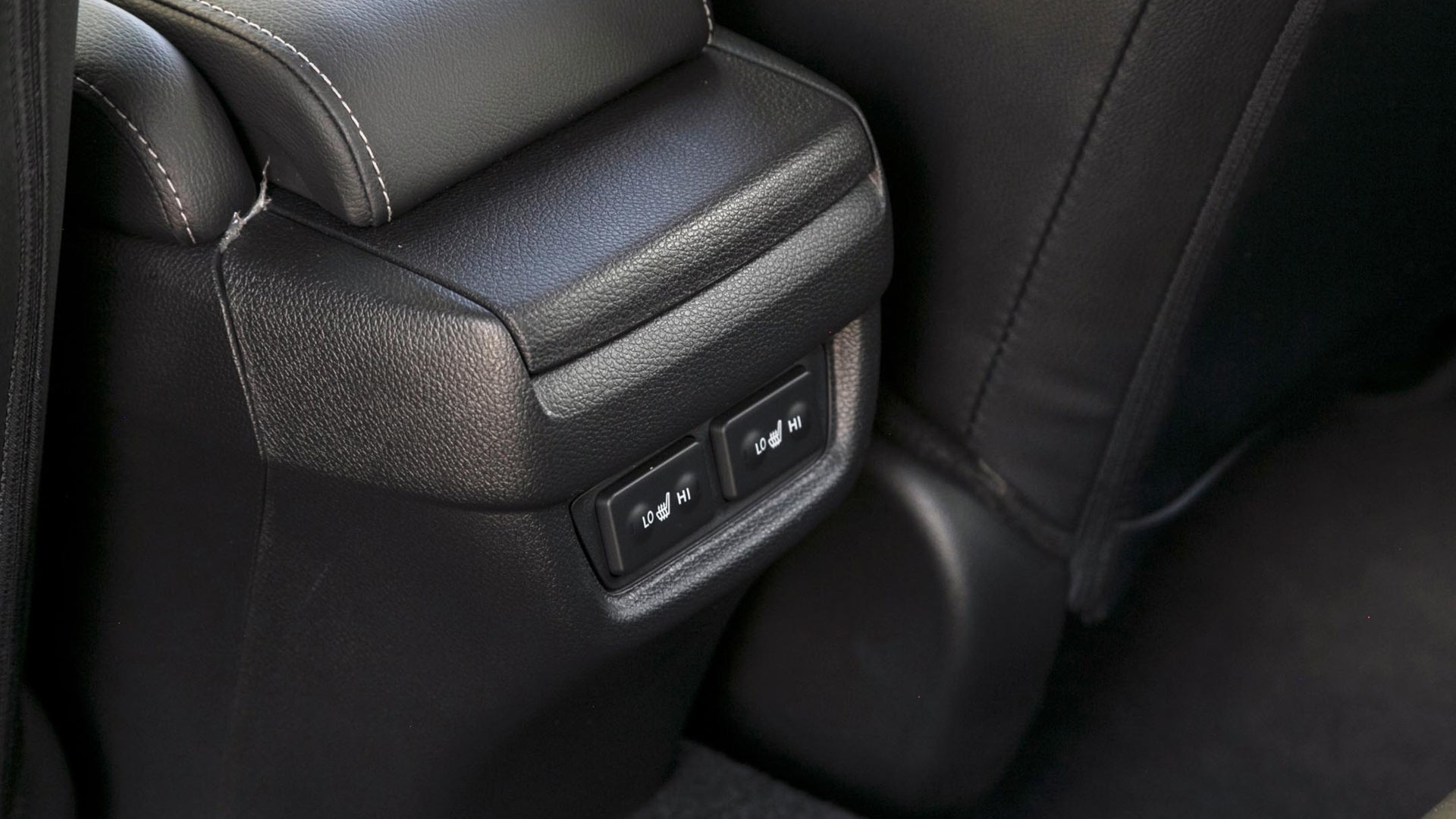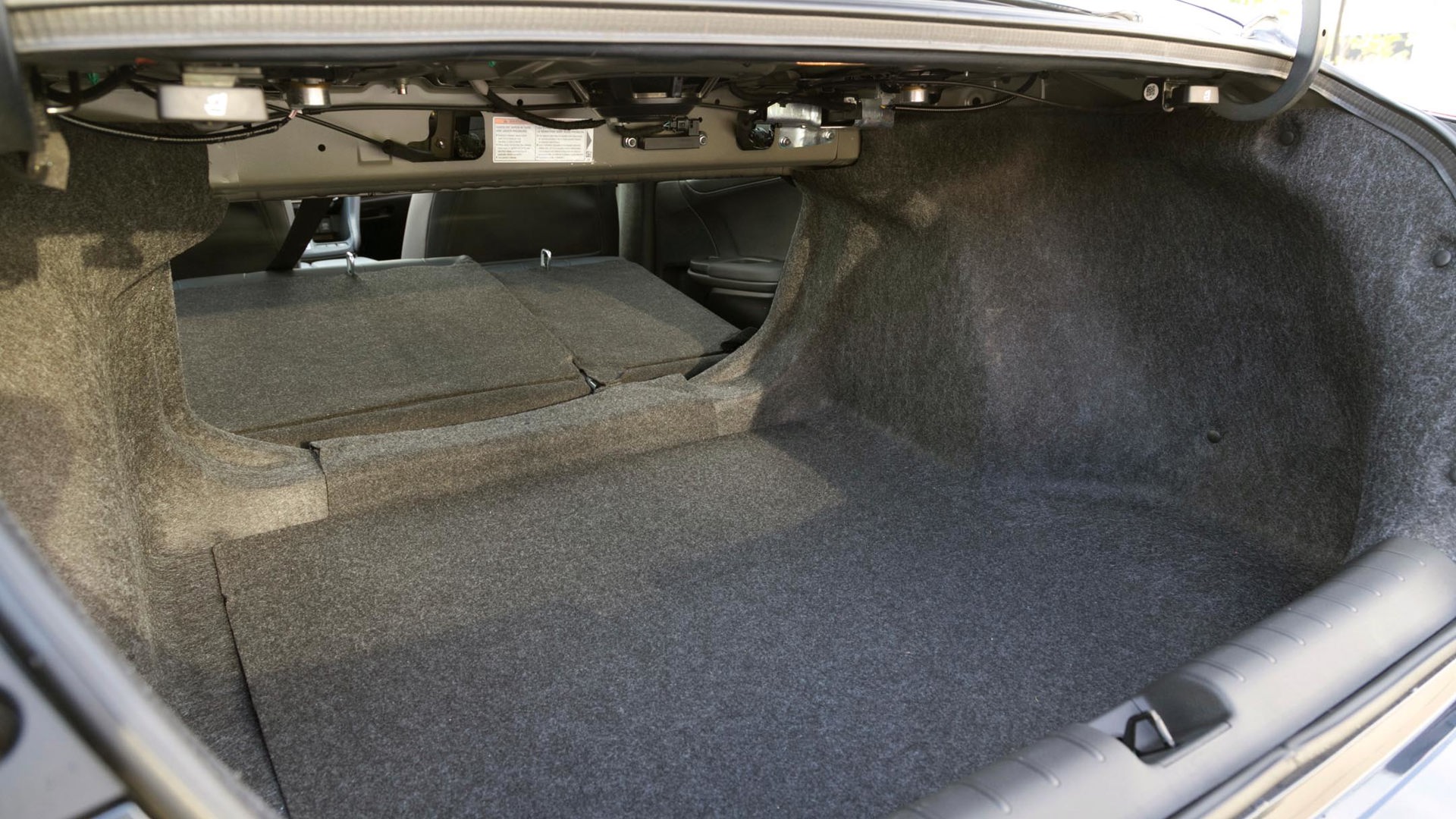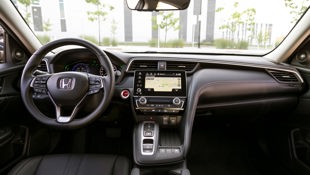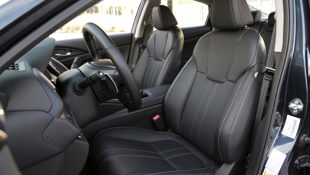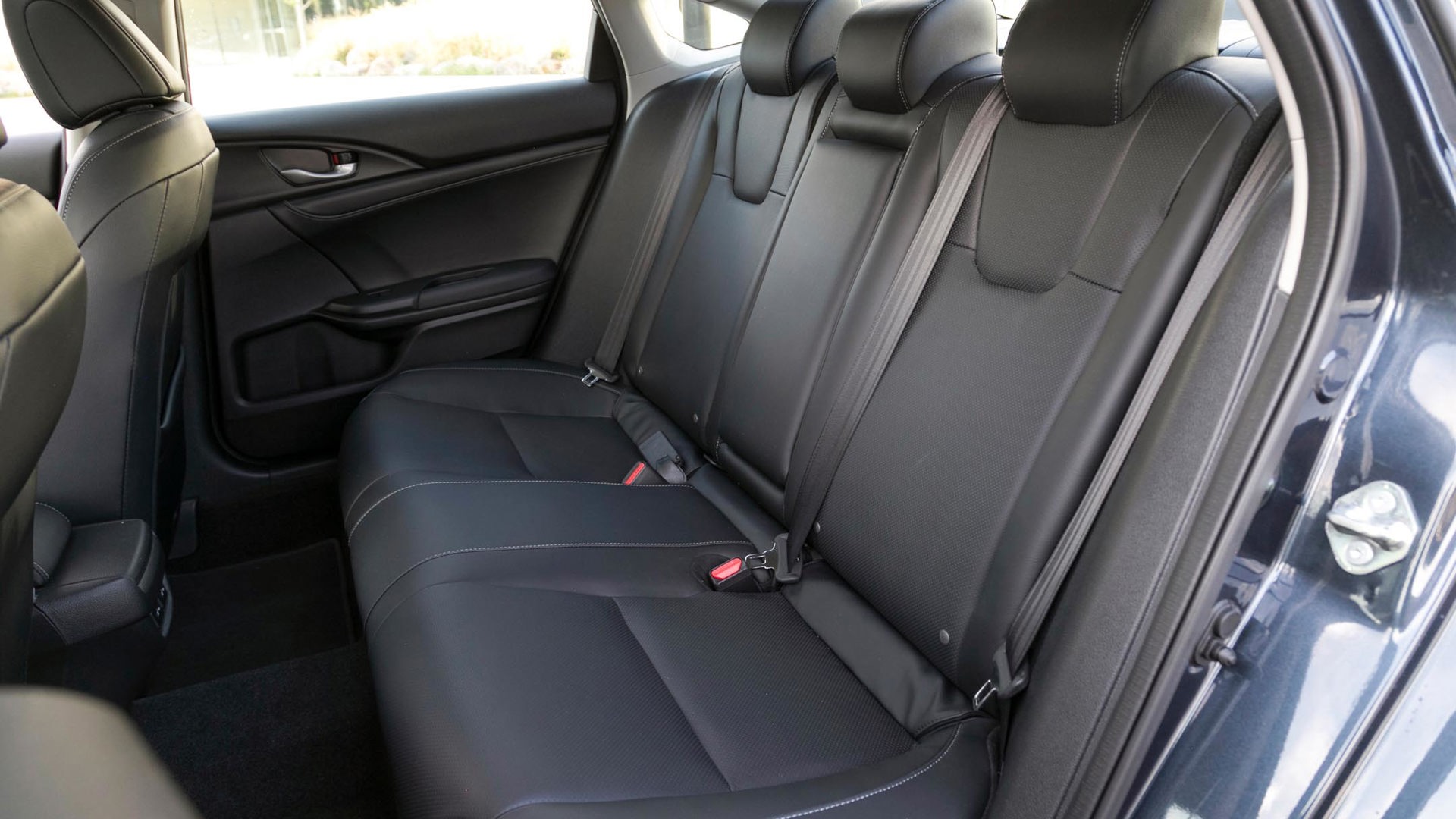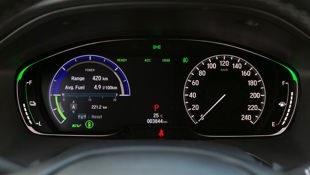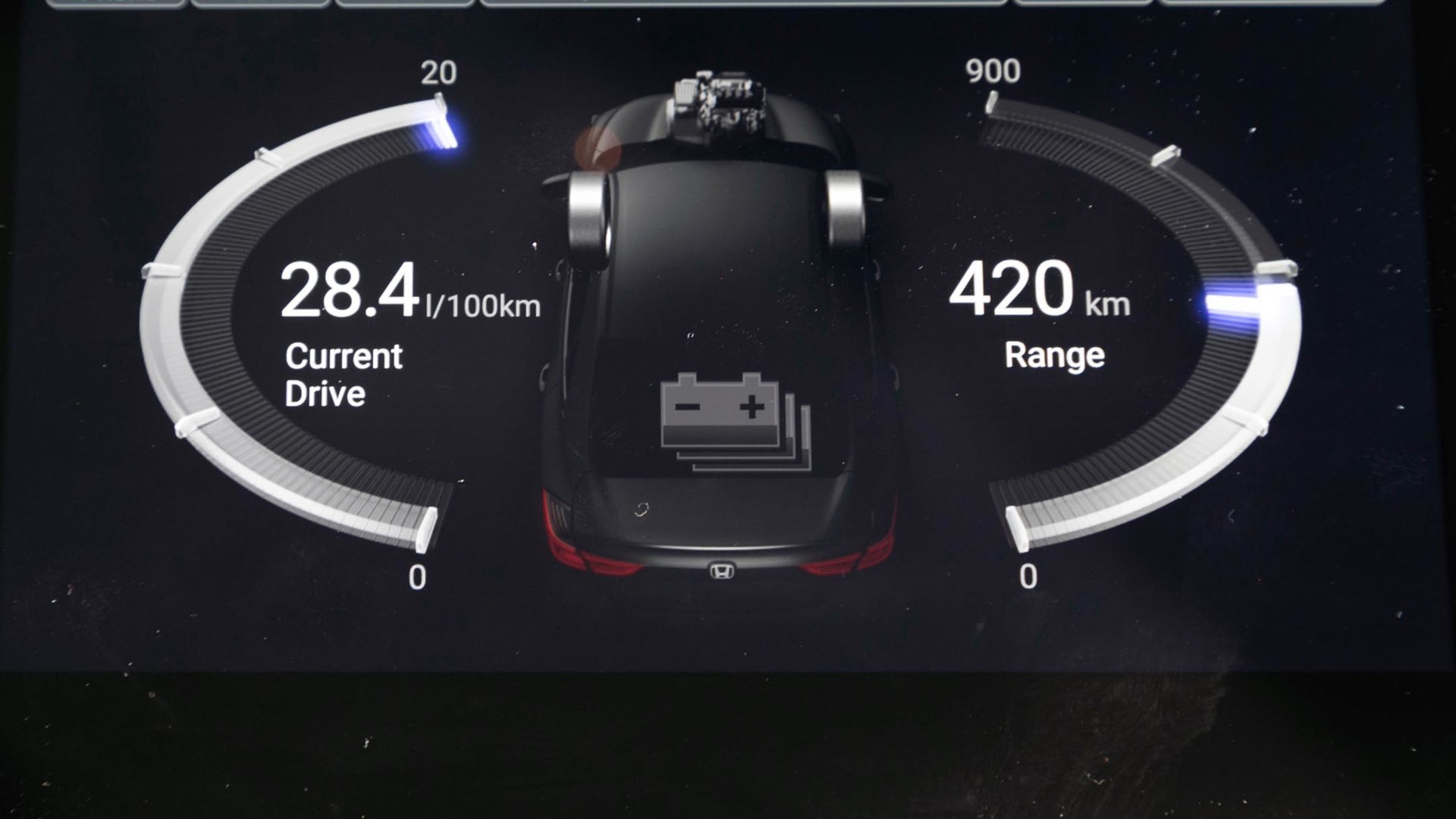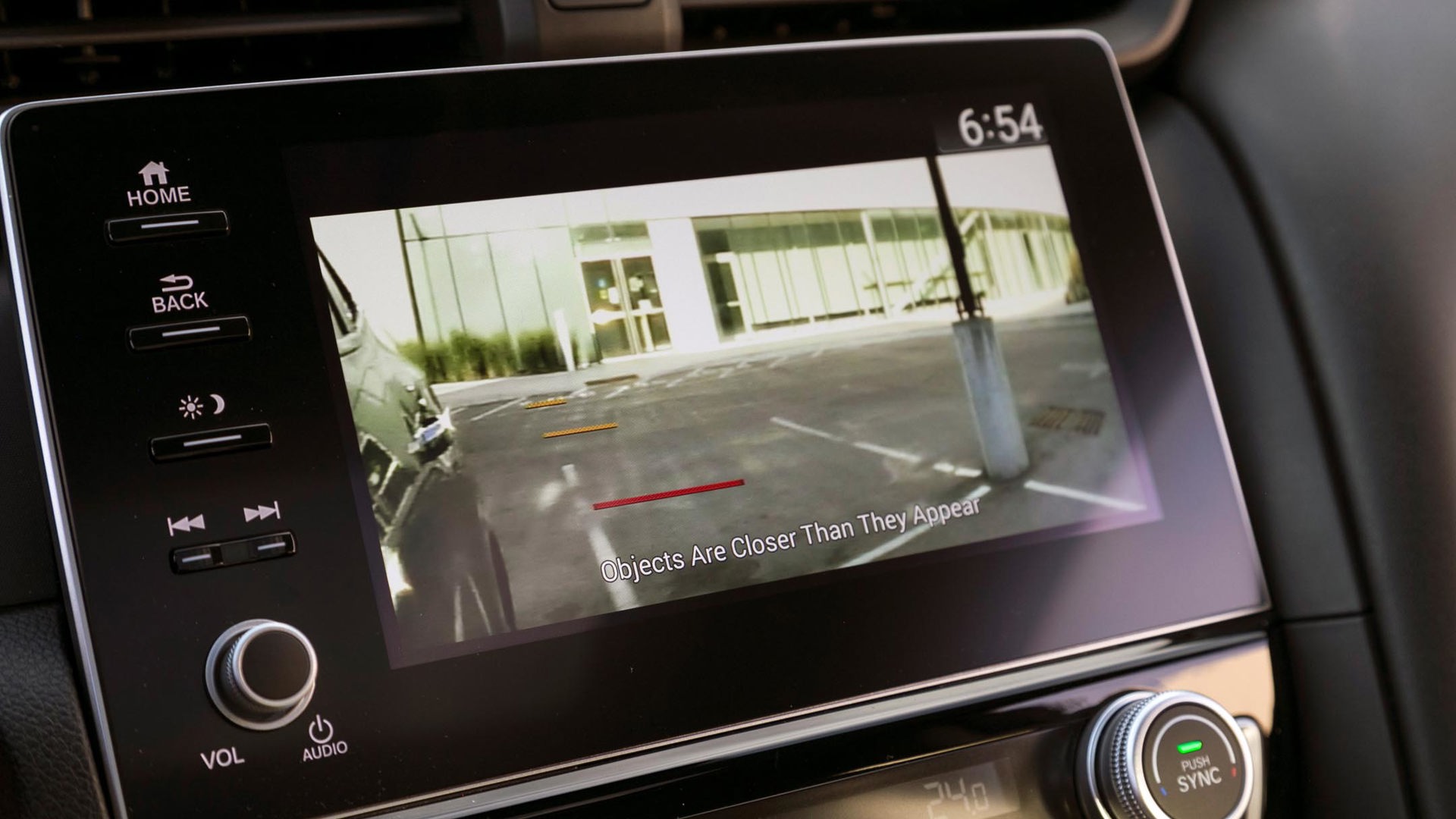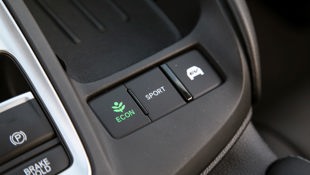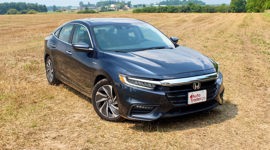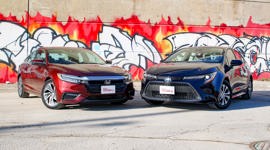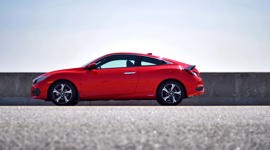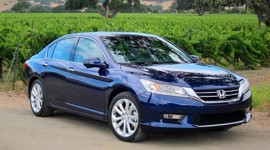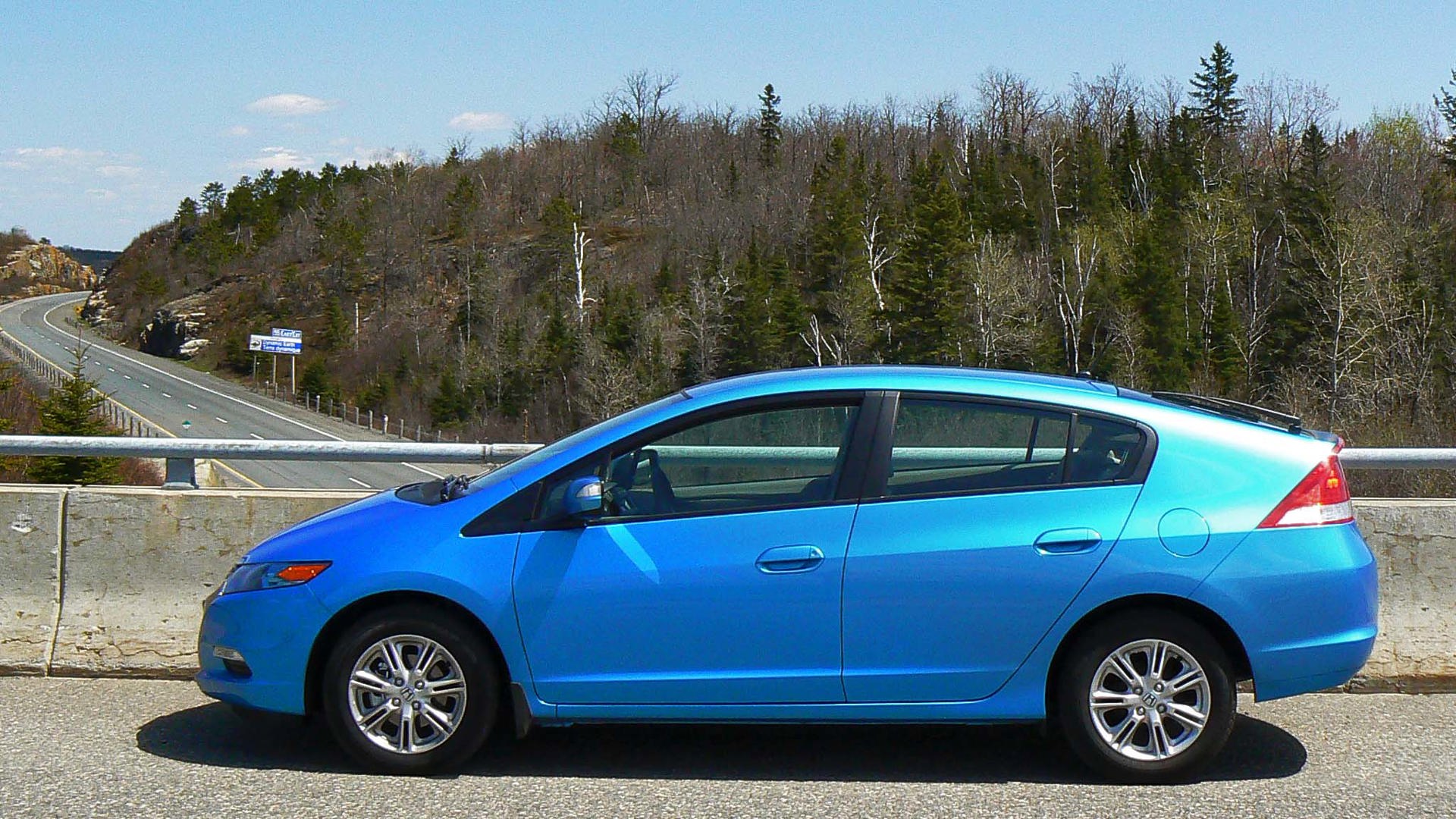 AutoTrader SCORE
AutoTrader SCORE
-
STYLING7/10
-
Safety9/10
-
PRACTICALITY6/10
-
USER-FRIENDLINESS8/10
-
FEATURES8/10
-
POWER5/10
-
COMFORT6/10
-
DRIVING FEEL6/10
-
FUEL ECONOMY9/10
-
VALUE7/10
A couple of decades ago, Honda released a funky little two-seat hybrid with weird skirts over its rear wheels, a manual transmission, and a paint hue reminiscent of nasal congestion. Needless to say, the brand sold very few.
Honda went back to the drawing board and a few years later came out with an all-new – and rather homely looking – Insight. That one at least offered an extra pair of doors and a back seat, but still, very few noticed or cared.
Following another hiatus, Honda brought back the Insight name for a third attempt at a mainstream hybrid, abandoning the sensible hatchback for a standard sedan format – just as consumers flee en masse to SUVs. Is the 2020 Honda Insight doomed to the same fate as its predecessors? Perhaps, but it at least deserves a look from shoppers considering a hybrid.
Fuel Economy: 9/10
The Insight is meant to sip fuel and does so well. The official average consumption rates are 4.6 L/100 km in the city, 5.3 on the highway, and 4.9 combined. With little effort, our usual weekly mix of city, highway, and rural roads netted an indicated 4.9 L/100 km of regular-grade fuel consumption.
The EV light on the dash illuminates regularly to indicate the Insight is cruising – or coasting, or creeping – along on battery power only, and those hellbent on maximizing every drop of gasoline could be gentler on the throttle than we were to achieve even better efficiency. The 40-L fuel tank provides decent range, especially if the majority of driving is in the city – a perk of the hybrid system’s operation.
It’s worth noting that the Insight’s two primary competitors, the Toyota Prius and Hyundai Ioniq Hybrid, both deliver better efficiency than the Honda, with average figures superior to the Insight’s across the board.
Power: 5.5/10
In an age when even minivans are pushing the 300-hp threshold, a sedan packing only 107 ponies is more whisper than wallop. Add in the battery-powered hybrid punch and the combined output is still no better than 151 hp.
The torque figure improves things with 197 lb-ft from zero to 3,000 rpm, but in daily driving the Insight feels as if it’s trying to push itself through molasses. Applying the sport mode and a judicious stomp on the accelerator pedal does produce a surprisingly snappy leap from a standstill, but the peak torque comes and goes quickly, and passing power at speed is negligible.
Driving Feel: 6/10
Worse than the weak-kneed power is the way it’s delivered through the continuously variable transmission (CVT). The engine emits more moaning than a zombie flick as the revs climb, hold, and eventually fall, and it’s all accompanied by a significant rubber-band sensation.
Hybrids have traditionally had very grabby brake feel as much of the battery’s regeneration comes from collected kinetic energy through the braking system. The Insight’s brakes still help recharge the system, but for the most part, offer decently linear braking response.
Handling is also adept – especially for a car focused primarily on efficiency. The suspension isn’t as taut as a sport sedan, and the steering feel is minimal, but the Continental tires it comes with offer good grip without howling in protest at the slightest provocation on a corner, which is often the case with low-rolling-resistance tires.
Comfort: 6/10
The Insight is not a small car, measuring slightly longer than a Civic, but employing the same width and wheelbase. Front seat space is very good, even for taller individuals, but the rear seat is compromised in both access and headroom thanks to the sloped roof line.
But those front seats, while attractively styled with perforated leather, are heated but not cooled, and the headrests adjust only up and down and not for tilt, seeming to protrude too far forward for your reviewer to find a comfortable seating position.
Styling: 7.5/10
Dimensionally, the Insight is a virtual twin to the Civic sedan but borrows some styling cues from the more grown-up Accord. Although not a daring design, the Insight is nevertheless handsome and should hold up well over time. More importantly, when compared to its Prius and Ioniq competition with their bulky back ends, the Honda looks like a sleeker and more upscale machine.
The Insight’s interior is also well done, with high-quality, soft-touch materials covering all the key touch points. It bears plenty of family resemblance to other Honda products, and is sensibly laid out and tastefully executed.
Features: 8/10
Our Insight tester was a Touring trim that brings with it some chrome accents and a fancier interior. In addition to the leather seats (heated both front and rear) and sunroof, Honda adds standard satellite navigation and a 452-watt audio system. The sound quality from the 10-speaker set up is okay, but it’s more hollow-sounding than systems we’ve heard from some competitors.
The base Insight is already well-equipped with most of the features buyers want, plus it’s identical to the Touring trim mechanically and in terms of safety. We would like to see a wireless phone charger in the Insight, but it’s not available in either trim.
User Friendliness: 8/10
The seven-inch infotainment system is touch-sensitive and an easy reach for the driver. While not as slick as the all-glass cockpit found in the Volkswagen Jetta, or the larger screens found in other models, Honda’s system offers good resolution, responsiveness, and a straightforward menu system.
Apple CarPlay and Android Auto are standard equipment even in the base Insight, helping to make the technology familiar to drivers. The rest of the cockpit is sensibly laid out with simple controls for climate operation, and big, clear dials for pertinent driving information.
The push-button transmission lifted from the Accord is the only clumsy control in the Insight.
Practicality: 6/10
Not long ago, most hybrids sacrificed significant cargo space to bulky – and heavy – battery packs. The Insight’s engineers have packaged them low enough in the car to have minimal impact on the cargo bay, enabling a 416-L trunk (it’s 428 L in the base model, which forgoes some of the amplifiers and speakers from the Touring’s premium audio system). Not only is the trunk a reasonable size, but the rear seat is a 60/40 split-folding affair that increases the Insight’s usefulness.
Cramped rear headroom notwithstanding, the Insight offers sufficient passenger space for four (or five, in a pinch), making it every bit as practical as a Civic sedan. Still, buyers are flocking to SUVs and crossovers for their perceived practicality and cargo capacity – a benefit also afforded by the Ioniq and Prius, both of which are equipped with liftback-style trunks, giving them significantly greater cargo capacity and rear-seat headroom.
Safety: 9/10
Honda’s excellent active safety suite is standard on all Insights and includes adaptive cruise control with autonomous braking, lane-keeping assist, active road-departure and collision mitigation systems, and automatic high beam control. We did find the automatic cruise control a little overly cautious, taking a long time to decide it was safe to accelerate once the lane was clear ahead. Similarly, the lane-keeping assist on our tester was hyperactive, constantly – but gently – wrestling with the driver over the direction of the steering wheel.
Beyond that, the Insight also features Honda’s clever camera-based blind-spot monitoring system that fits a camera into the right-side door mirror and projects what’s on that side of the car on the infotainment screen when the right turn signal is activated. [There’s also a button on the end of the signal stalk to activate the system without signalling. – Ed.]
Value: 7/10
In top Touring trim, the Insight’s list price is $32,490, bringing it in slightly under its direct competitors. There are no options to add to, making it an even better value, and the base model starts at $28,490.
For a bit of ballpark perspective, the Insight costs just over $3,000 more than a comparably equipped Civic sedan, and offers a combined fuel economy average roughly 2.2 L/100 better in combined gas consumption. Travelling 20,000 km per year, it would take the Insight buyer upwards of six years to break even at current fuel prices. For drivers doing a lot of stop-and-go driving, or those commuting a much greater distance, the Insight’s hybrid system would pay for itself sooner.
The Verdict
Honda’s Insight is an easy car to live with, requiring few compromises and modest investment over a similarly equipped compact sedan. Still, while priced slightly better than its competitors, it offers less utility and efficiency, relegating the Insight once again to also-ran status in the affordable hybrid category.
| Engine Displacement | 1.5L |
|---|---|
| Engine Cylinders | I4 |
| Peak Horsepower | 151 hp combined |
| Peak Torque | 197 lb-ft combined |
| Fuel Economy | 4.6 / 5.3 / 4.9 L/100 km cty/hwy/cmb |
| Cargo Space | 416 L |
| Model Tested | 2020 Honda Insight Touring |
| Base Price | $32,490 |
| A/C Tax | $100 |
| Destination Fee | $1,655 |
| Price as Tested | $34,245 |
|
Optional Equipment
None
|
|
